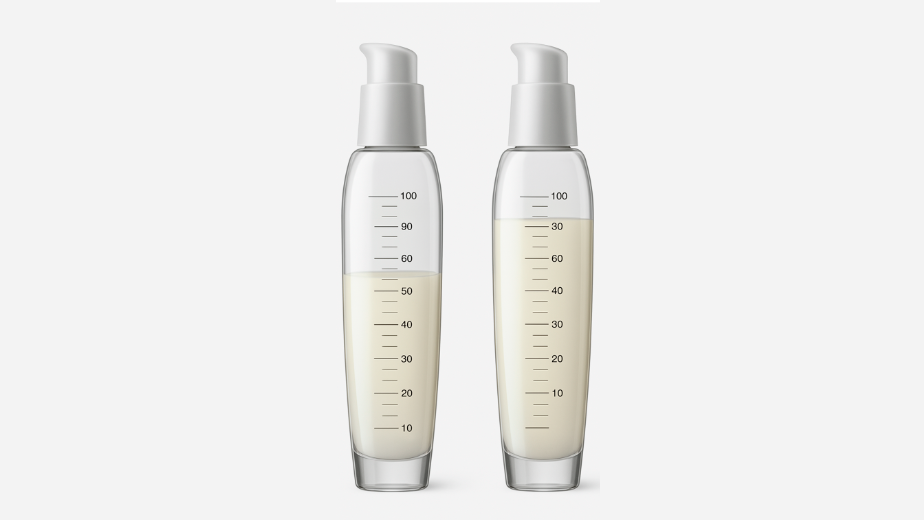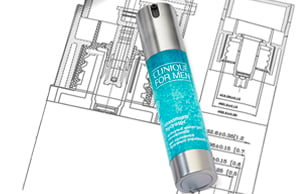
When beauty brands think about packaging, the first thought is often aesthetics, and that makes sense. Packaging is your product’s first handshake, a silent but powerful communicator of your brand’s identity. But from our view as packaging engineers, we know that what’s behind the scenes matters just as much, maybe even more.
Whether you’re launching your first product or your fiftieth, here are five packaging mistakes we see time and time again, and how smart engineering can help you avoid them.
1. Prioritizing Aesthetics Over Functionality
That beautiful concept sketch might win over your marketing team, but will it leak? Will it dispense consistently? Can the consumer easily use every last drop? These are the questions that often get overlooked when design is prioritized above all else.
We’ve worked with brands who fell in love with crystal-clear airless bottles, only to realize later that their light-sensitive formula degraded quickly. Others wanted wide-mouth jars for luxurious texture reveals but didn’t account for the contamination risks with finger application.
Engineer’s Take: Form must follow function. We consider things like barrier properties, ergonomics, dosing precision, and air-tightness, all while supporting your design goals. Early engineering involvement ensures your packaging doesn’t just look the part, but also delivers on usability, protection, and long-term performance.

2. Underestimating Formula Compatibility
One of the most overlooked, yet most critical, aspects of packaging selection is how the material will interact with your product over time. Essential oils, acids, and actives can break down plastics, leach color, or cause swelling. Natural formulas especially can be volatile in unexpected ways.
We’ve seen scenarios where a client used a dropper with a nitrile rubber bulb, only to find the bulb shriveled after 60 days due to a high alcohol content. Or another where a soft-touch coating on a jar began to peel after contact with an exfoliating serum.
Engineer’s Take: Compatibility testing isn’t optional, it’s essential. We recommend conducting stability studies in real-time and accelerated conditions using your actual formula and packaging together. APC Packaging supports this with access to lab testing, material data, and historical performance knowledge to guide your choices safely and confidently.
3. Neglecting Fill Level Considerations
Volume doesn't always equal visual fullness, and that can create a mismatch between your intended customer experience and the reality on the shelf. We’ve had brands request a sleek, tall bottle for a lightweight serum, only to be surprised when the fill line sat frustratingly low, giving the illusion of “less product.”
This not only affects perception, but also product integrity. Too much headspace in a jar can lead to faster oxidation. And in airless systems, incorrect fill volumes can prevent the actuator from functioning properly, resulting in poor dispensing or complaints of empty bottles.
Engineer’s Take: Volume is about more than just milliliters. We calculate the inner geometry, actuator travel distance, and product viscosity to recommend the best package, or redesign an existing one to better suit your goals. We can also prototype packaging to show exactly how your fill will look, helping you make informed decisions early on.

4. Forgetting About E-commerce Durability
Packaging needs to look great, but also survive a bumpy ride. In the age of DTC and influencer unboxings, a shattered glass jar or leaky tube doesn’t just cost you a product, it can cost you brand trust and a five-star review.
We’ve had to troubleshoot custom components that failed drop tests or airless pumps that leaked due to pressure changes in air transport. Packages designed solely for retail shelves often don’t account for the rougher treatment of parcel carriers.
Engineer’s Take: When we design for e-commerce, we think beyond the shelf. We factor in transit stress points, recommend shatter-resistant alternatives, and design internal seals that prevent leakage, even at altitude. With ISTA testing and 3D transit simulations, we can help you validate that your product arrives as beautifully as it left the warehouse.

5. Jumping into Tooling Too Soon
Tooling is exciting, it’s the point where your idea becomes real. But it’s also one of the most expensive parts of the process. If you move forward with tooling before validating your design through testing and prototyping, small issues can turn into big setbacks.
We’ve seen brands rush into mold production without testing viscosity through a pump mechanism, only to find the product clogs the actuator. Others skip prototyping and discover late-stage ergonomic or fit issues that require costly retooling or design changes.
Engineer’s Take: Think of prototyping as your insurance policy. From 3D printing to soft tooling and low-volume pilot runs, we can help you vet your design before making a large investment. With our in-house engineering team and factory partnerships, we can catch red flags early, and save your timeline, budget, and sanity.
Every beauty brand wants packaging that makes an impact, but it’s the details behind the scenes that ensure your product delivers on that promise. Involving packaging engineers early allows us to foresee problems, optimize design, and create solutions that truly work for your formula, your team, and your customers.
At APC Packaging, our mission is to support beauty brands not just as suppliers, but as true development partners. If you're navigating a new launch, rebrand, or sustainable packaging transition, we’re here to help from concept to completion.
Interested in learning more? 🔗 Visit techcenter.apcpackaging.com for more resources.
Reach out to the APC Packaging team with your next packaging challenge at https://apcpackaging.com/contact/








